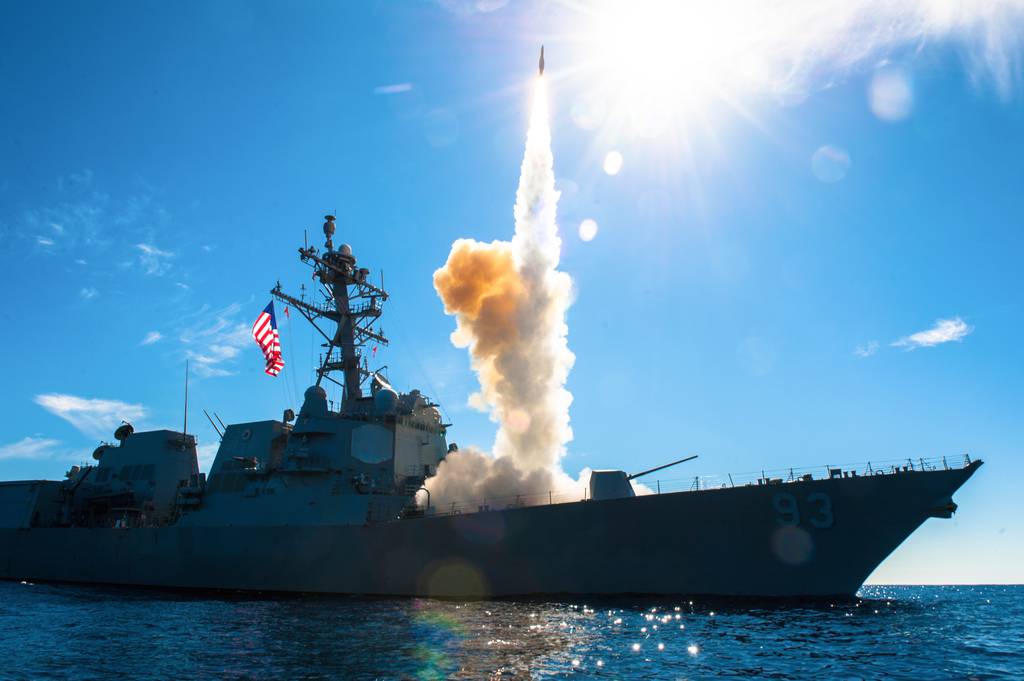
The U.S. Navy awarded Raytheon a $344 million contract for the development of two Standard Missile variants with a common guidance section that will bring additional targeting capability to the American and foreign fleets.
The new SM-2 Block IIICU and SM-6 Block IU missiles will include increased targeting capabilities, helping the defensive Standard Missiles see additional kinds of threats they’re meant to intercept.
The variants will share a new guidance section, target-detection device, and other software and electronics. Their commonality will allow Raytheon to manufacture them on the same production line in Arizona.
Raytheon stopped its SM-2 production line after delivering fiscal 2017 orders to American and foreign customers, as demand for the missile dried up, the company told Defense News. The line restarted with an FY21 order, as demand abroad for the missile returned.
The next batch of orders will be this new SM-2 IIICU variant, which for the first time will introduce an active radar to the medium-range missile.
“That demand signal has been growing. The legacy SM-2 has really been a key protection for our allied navies. And as we look forward, being able to deliver an enhanced capability [is] significant for us,” Misty Holmes, Raytheon’s vice president of naval shipboard missiles, told Defense News.
A company news release noted the development program is largely funded by the Pentagon’s Foreign Military Sales program and that the U.S., Australia, Canada, Japan and South Korea would be the first to receive them. Holmes declined to discuss the specifics of the funding arrangement, but said the development of the new variant was largely driven by the U.S. Navy to get ahead of demand from the FMS partners.
Having an active radar on the missile is “a generational leap in technology” and “will increase the fleet’s ability to engage more targets — it absolutely gives the missile the capability to see additional threat sets that are incoming,” Holmes said.
For the SM-6 Block IU, the company said the new variant addresses component obsolescence challenges in the electronics unit.
This contract covers the development of the common subcomponents. An additional contract expected later this year will fund the missile qualification and at-sea testing for the SM-2 Block IIICU.
Author: Megan Eckstein
Source: DefenseNews



